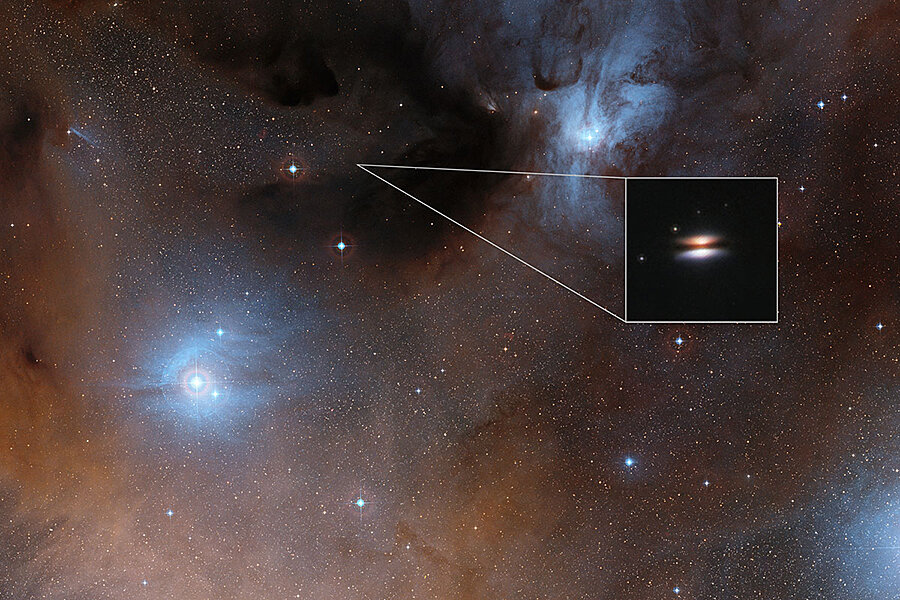Why frigid 'Flying Saucer' disc could change what we know about planets
Loading...
Astronomers have made an unusual discovery about a planet-forming disc nicknamed the “Flying Saucer” that surrounds a young star: the dust grains that make it up are startlingly cold.
At -266 degrees Celsius, that’s cold enough to consider revamping our understanding of the discs, which are made up of gas and dust that could someday consolidate into a planetary system.
The young star, known as 2MASS J16281370-2431391, is located some 400 light years from Earth in the Rho Ophiuchi star formation region. Because the frozen disc is seen nearly edge-on in pictures taken with two high-powered telescopes, creating a dark band around the star, it has earned the name “Flying Saucer.”
An international team of researchers combined measurements made with the Atacama Large Millimeter/submillimeter Array (ALMA) telescope in Chile and the IRMA telescope in Spain to reach a surprising discovery:
“This disc is not observed against a black and empty night sky. Instead it’s seen in silhouette in front of the glow of the Rho Ophiuchi Nebula. This diffuse glow is too extended to be detected by ALMA, but the disc absorbs it. The resulting negative signal means that parts of the disc are colder than the background,” said Stephane Guilloteau at the Laboratoire d'Astrophysique de Bordeaux, France, who led the study, in a statement.
“The Earth is quite literally in the shadow of the Flying Saucer!” he added.
The researchers made the first-ever direct measurements of the Flying Saucer's dust grains, which measure approximately one millimeter across and are located about 9 billion miles away from the star. They found that the grains had settled to a low temperature of -266 degrees, only seven degrees above absolute zero. Their research was recently published in the journal Astronomy & Astrophysics Letters.
Currently, models of planetary formation discs predict this dust should be at least 10 to 15 degrees above absolute zero (-258 to -253 degrees Celsius), a discrepancy that seems small but represents a large change in what scientists know about planetary formation models, reports Discovery News.
If low dust temperatures turn out to be common in protoplanetary discs, that could mean a reevaluation of how planets form and evolve. Cooler dust and pebbles, for example, could allow large planets to form relatively close to their parent star, the researchers say.
“To work out the impact of this discovery on disc structure, we have to find what plausible dust properties can result in such low temperatures. We have a few ideas – for example the temperature may depend on grain size, with the bigger grains cooler than the smaller ones,” says co-author Emmanuel di Folco, in a statement. “But it is too early to be sure.”





